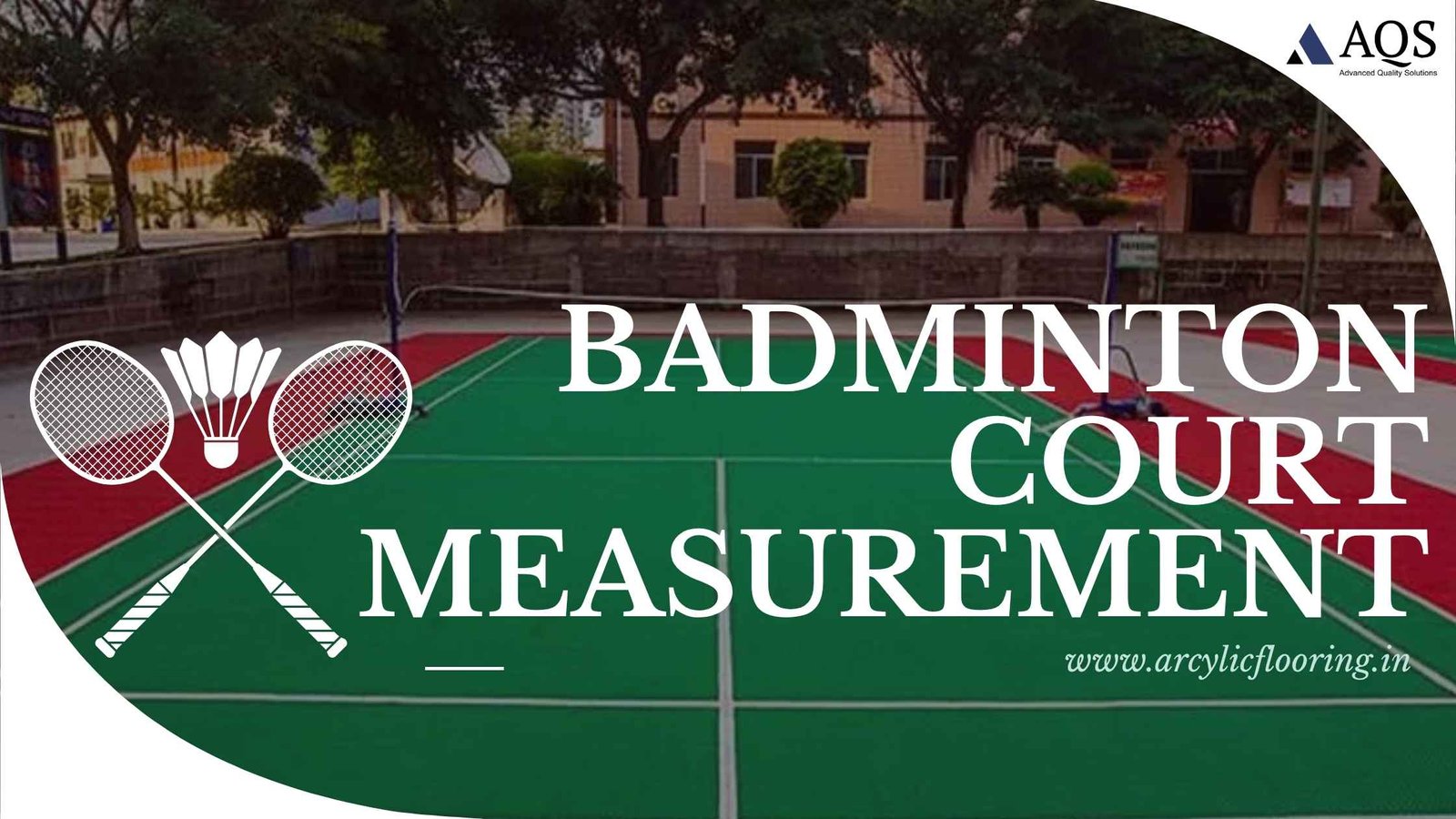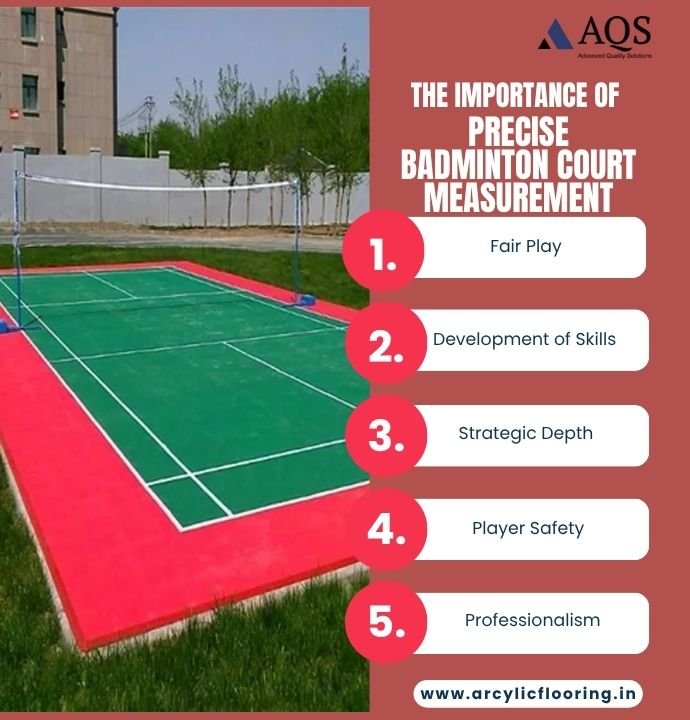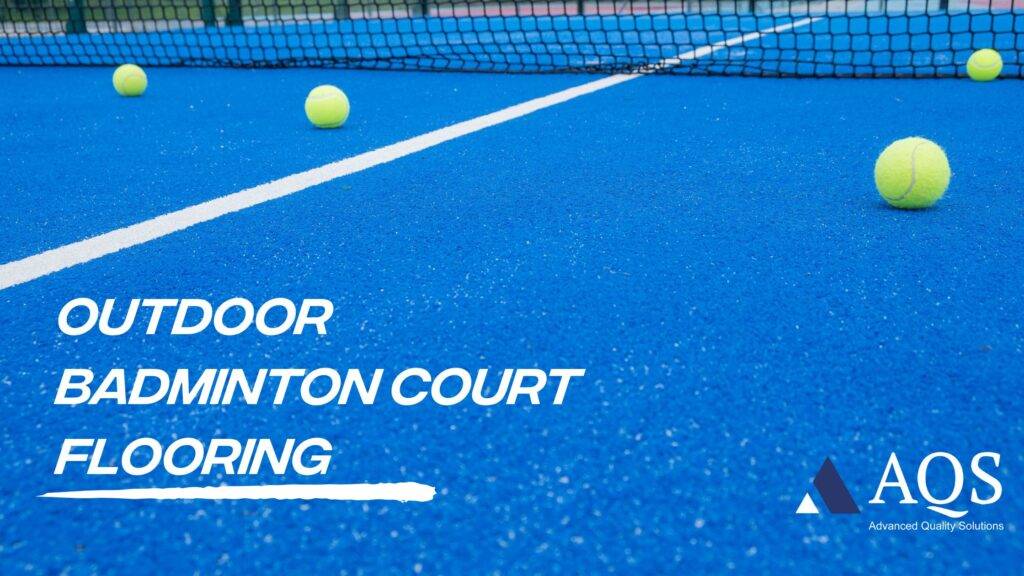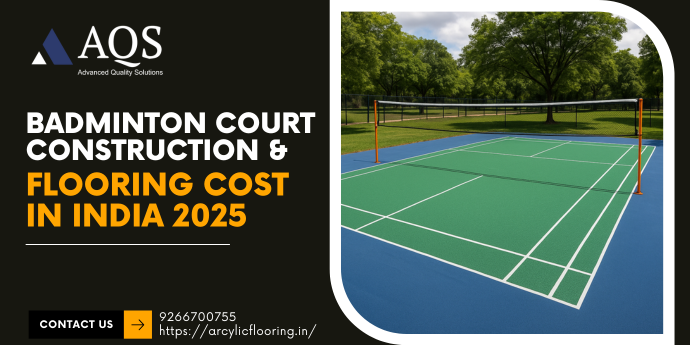
With its fast rallies, deceptive drop shots, and acrobatic smashes, badminton is a sport that requires accuracy from both its players and its playing surface. The court itself dictates movement, strategy, and ultimately the course of play, making it an essential part of the game. Together with AQS, we explore the standard badminton court measurement for outdoor badminton play today, illuminating the significance of every millimeter in this fascinating field.
A well-designed court is the cornerstone of a fair and competitive game, and AQS, a brand known for excellence and accuracy in sports facilities, is aware of this. Whether you’re a professional academy striving for global standards or a young enthusiast putting up a backyard court, understanding these Badminton court dimensions is paramount.
The Conventional Badminton Court Measurement:
By establishing the universal standards for badminton court dimensions, the Badminton World Federation (BWF) guarantees consistency and equity at all playing levels, from a friendly game to the competitiveness of an Olympic final.
Length and Width: The Essential Measurements
Whether used for singles or doubles, a typical badminton court is always 13.4 meters (44 feet) long. The net separates the two halves of this length, which are each 6.7 meters (22 feet) long
The width of the court is where the dimensions vary:
- Doubles Court: The entire 6.1-meter (20-foot) court is used for a doubles court. The “doubles sidelines” or “outer tramlines” are common names for these outer lines.
- Singles Court: At 5.18 meters (17 feet), the width is somewhat more constrained when playing singles. We refer to these inner lines as the “singles sidelines.”
Service Courts: Where Every Rally Begins
In order to define the service areas—which are essential for legal serves—the court is further divided with great care. Each half of the court features, four courts of service, as defined by:
- The short service line is 1.98 meters (6 feet 6 inches) away from the net. For a serve to be deemed legitimate, it must land past this line.
- The center line separates the left and right service courts by dividing the court’s width.
- Long Service Line: This is where the differences between serving in singles and doubles become clear.
- The long service line is the court’s back boundary line for singles.
- An extra long service line for doubles is located 0.76 meters (2 feet 6 inches) inside the back boundary line. As a result, players must modify their serving techniques because the serve length in doubles is actually shorter than in singles.
The court is usually marked with lines that are 40 mm (1.5 inches) wide and easily recognizable, usually in yellow or white.
The Net: A Precision Barrier
Another characteristic that makes badminton unique is the net, which has exact measurements:
- Height at Posts: On the doubles sidelines, the top of the net is 1.55 meters (5 feet 1 inch) above the court’s surface at the posts.
- Height at Center: The net is slightly lower in the middle, at 1.524 meters (5 feet) from the court surface, as a result of a slight sag.
- Width: The net covers the whole doubles court and is 6.1 meters (20 feet) wide. It ought to be composed of a thin, dark-colored cord with a mesh that is sufficiently tiny to avoid
A fine, dark-colored cord with a mesh small enough to keep the shuttlecock from passing through should be used to make it.
The significance of a correctly tensioned net is emphasized by AQS. An excessively taut net may result in an unnatural bounce, while a sagging net may unfairly change the shuttlecock’s trajectory.
Outdoor Badminton Court Measurement
Outdoor badminton court is still very popular for leisure play and community gatherings, even though competitive badminton is primarily an indoor sport played in controlled settings to reduce outside influences like wind. The basic measurements of an outdoor badminton court are identical to those of a typical indoor singles and doubles court:
- 13.4 meters (44 feet) in length
- Doubles Width: 20 feet, or 6.1 meters
- Width of singles: 5.18 meters (17 feet)
- Net Height: 1.524 meters (5 feet) in the middle, 1.55 meters (5 feet 1 inch) at the posts.
However, there are new factors to take into account when playing badminton outside, especially with regard to the court surface and surrounding conditions. With its experience in a variety of sports installations, AQS emphasizes these crucial elements for outdoor courts:
Outdoor Badminton Surface Materials:
Outdoor badminton courts need materials that can endure different weather conditions while still offering sufficient grip and a steady bounce, in contrast to the sprung wooden or synthetic PVC/PU surfaces typical of indoor courts. Typical options for outdoor courts consist of:
- Concrete or asphalt with acrylic topcoats: These offer a strong, weatherproof foundation. The upper layers of acrylic provide some cushioning and traction. To guarantee durability and maximum playability, AQS suggests specific acrylic systems made for sports.
- Synthetic Materials : Although synthetic flooring is frequently connected to indoor courts, some types are made specifically for outdoor use. These are a popular option for semi-professional and recreational outdoor setups.
- Rubber Flooring: Some outdoor courts use rubber flooring, which is renowned for its seamless finish and cushioning, providing players with a forgiving surface.

The Importance of Precise Badminton Court Measurement:
Precise badminton court measurement are essential to the game’s integrity and enjoyment, and they go beyond simply following the rules. AQS is adamant that proper badminton court construction has a direct impact on:
- Fair Play: Accurately marked lines guarantee accurate shot evaluation, averting arguments and promoting a level playing field. Consider how annoying it would be to have a shuttlecock land “in” on a court that was mismeasured and actually “out”!
- Development of Skills: Players build their skills using the typical badminton court measurement. Poor spatial awareness and an inability to adjust to regulation courts can result from training on a court that is too small. AQS constructs the courts to replicate the standards of international competition, giving prospective players a real training environment.
- Strategic Depth: The particular dimensions greatly influence the game’s subtleties of strategy. Based on these boundaries, players learn to control the rally, target particular parts of the court, and take advantage of angles.
- Player Safety: By reducing trip hazards and guaranteeing predictable movement, level, consistent surfaces and clearly marked boundaries help to ensure player safety. Safety is AQS’s top priority when building courts.
- Professionalism: Following BWF guidelines is a sign of professionalism and dedication to the sport for academies and competition locations. It makes it possible to hold official competitions and offers a setting that gets athletes ready for more competitive settings.
Environmental Issues and AQS’s Potential Solutions:
Although it provides natural light and fresh air, the great outdoors poses special difficulties for badminton. With its proficiency in building synthetic acrylic courts, AQS provides ways to lessen these:
Wind
Due to its light weight, the shuttlecock is extremely vulnerable to wind. Its trajectory can be drastically changed by even a slight breeze, making accurate shots challenging.
AQS Solution: For intense outdoor play, think about enclosing the court with netting or wind barriers. On your AQS-installed synthetic acrylic court, tall hedges or well-placed fences can greatly reduce wind interference, enabling more reliable rallies.
Sun and Glare
The shuttlecock can be hard to follow in direct sunlight, and glare can be a big distraction.
AQS Solution:The court should be oriented north-south to minimize direct sunlight during peak hours. To improve comfort and provide shade on the colorful acrylic surface, use pergolas or canopies. To ensure clear visibility without glare, AQS advises appropriate lighting for evening play: 200 lux for recreational use and 750–1000 lux for competitive venues.
Rain and Drainage
A substantial safety risk arises when water buildup on the court surface makes it slick and unusable for play.
AQS Solution: For outdoor badminton courts, adequate drainage systems are vital. This entails creating a court that slopes slightly or using perforated surfaces to let water run off fast. Synthetic acrylic’s non-porous quality and efficient drainage system guarantee quick water runoff, allowing players to use the court shortly after a downpour.
Variations in Temperature
Extreme heat or cold impacts players and the court material.
AQS especially designs its synthetic acrylic materials to withstand thermal expansion and contraction, guaranteeing the court surface’s stability and longevity in a range of temperatures. A fundamental component of AQS’s strategy is routine maintenance and inspections, which can assist in locating and resolving any problems brought on by temperature fluctuations.
Conclusion
With its exact measurements and carefully drawn lines, the badminton court is much more than just a place to play, it serves as a foundation for athletic prowess, a canvas on which strategy is developed, and a silent partner in every rally. Anyone participating in the sport must comprehend its measurements, which range from the overall length and width to the complex service lines and net height.
AQS is proof of the value of accuracy and quality in sports facilities, particularly when it comes to synthetic acrylic flooring. AQS guarantees that every badminton court they build offers the best possible conditions for players to improve their skills, engage in intense competition, and genuinely enjoy the thrilling game of badminton by following international standards and taking into account the particular requirements of both indoor and outdoor settings. The next time you’re on a badminton court, stop and admire the high-performance synthetic acrylic surface and precise engineering that make for such dynamic and skillful play. AQS promotes this precision in all of its projects.




